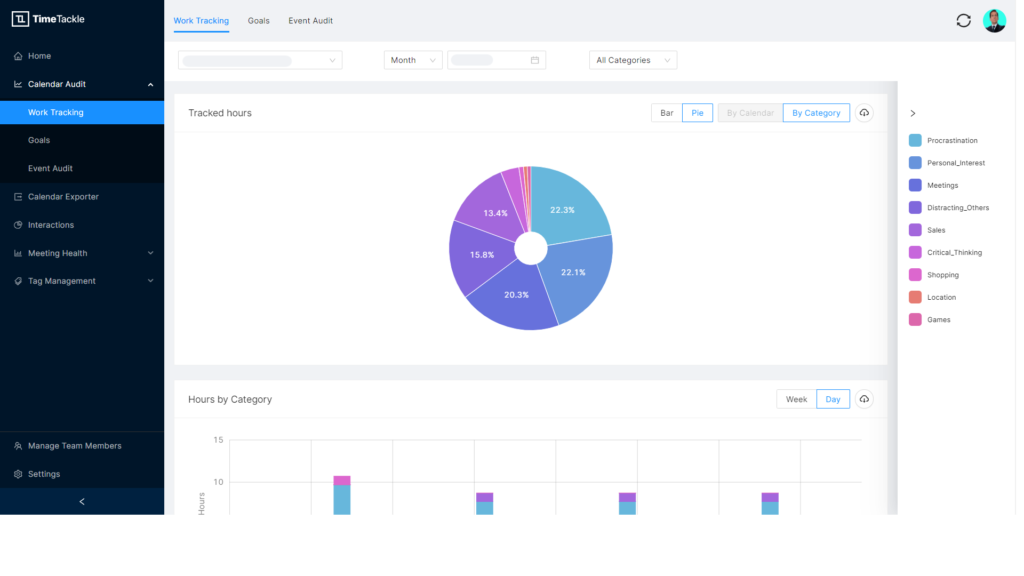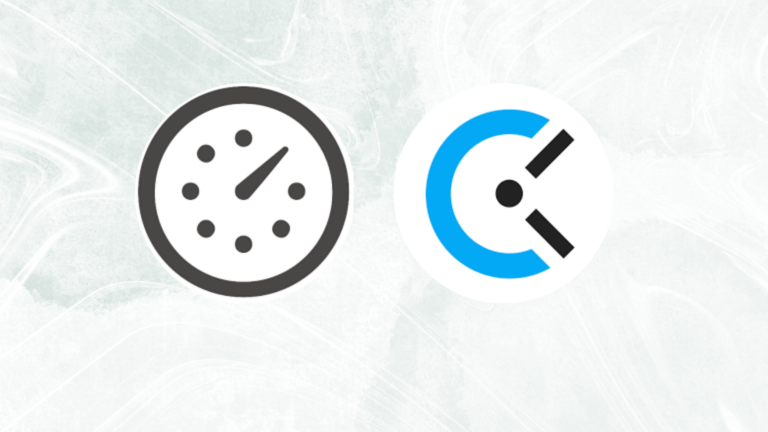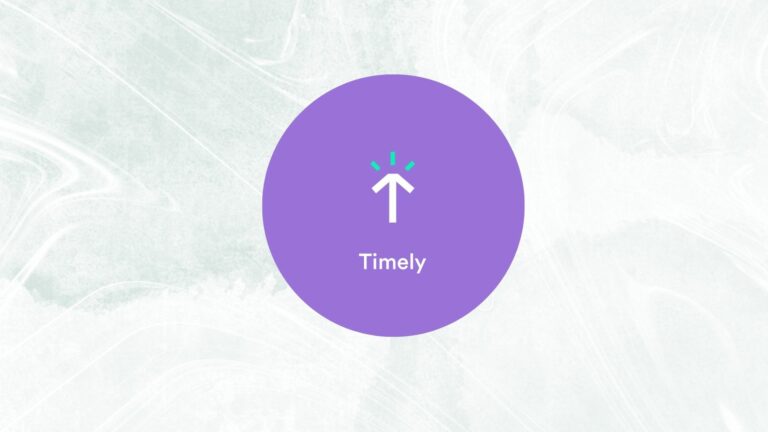One thing that we all can agree about the modern workplace is this: If you do not control your schedule, it will control you. Being productive all the time is not an easy task. As an adult, you are responsible, either as an employee, parent, volunteer, or more likely- all of these. So how can you balance the necessary evils of meetings, e-mails, team chat, and “busy work” with your own personal time?
Since becoming a digital hermit is not an option for most of us, we need solid strategies to help focus on a distracting world. And that is where timeboxing comes in.
Table of contents
- What is Time Boxing?
- The Benefits of Timeboxing
- 1. Promotes “Deep Work”
- 2. Helps to cut out “Shallow work” more efficiently
- 3. Makes You Focus on How You Spend Your and Your Team Members’ Time
- 4. Tackles Perfectionist Tendencies
- 5. Helps to follow through on your goals
- 6. Create a balance between our professional and personal lives
- Timeboxing vs Procrastination
- Organize Your To-do List Better with Timeboxing
- How to Time Box: The Ultimate Time Management Technique
- Time Boxing with TimeTackle
- Summary
What is Time Boxing?
Timeboxing is a time management technique that involves dividing your day into time boxes. Each box is solely committed to the fulfillment of a given activity or combination of activities. Rather than keeping open-ended to-do lists of tasks, you will do as time permits, you will begin each day with a concrete schedule outlining what you will need to accomplish and when.
“It is an extremely useful strategy for self-discipline and planning in your professional and personal lives so that your important chores come first.”
Once you have reserved a time box, you must treat it like you would to a scheduled meeting — no last-minute rescheduling, no distractions while working on the timeboxed task, and so forth. Timeboxing time management technique will set a strict limit or time constraints on your entire day with short breaks so that you complete your tasks effectively within the time allotted.
With days planned, you will not have to continuously decide what to focus on. You will only have to keep to your limited time schedule. If you get out of work or distracted, just glance at your calendar and get back to whatever job you have boxed your time. And even though we are concentrating on timeboxing as a means of managing your own work. However, the same concepts may be applied to allocating duties and managing your team members’ time as well.
The Benefits of Timeboxing
Timeboxing may sound very simple on the surface, but the impact and benefit are quite profound.
1. Promotes “Deep Work”
When you set a chunk of time to work on a single project, challenge, or activity, you bring all your and your team members’ mental resources to one thing rather than splitting your attention thinly over multiple projects. The more you train the mental muscles needed for intense work, the easier it gets to stay concentrated.
2. Helps to cut out “Shallow work” more efficiently
Shallow work is the “busy job” that is urgent but not crucial to your long-term goals, for instance, think of paperwork or react to (most) emails. Timeboxing can help you put clear limits on how much time you will devote to it. Plus, putting related jobs together decreases context switching costs and allows you to focus better. By batching all of your shallow chores together in a specific time block or two, you will be able to perform them more effectively and protect the rest of your working day for higher-impact work.
3. Makes You Focus on How You Spend Your and Your Team Members’ Time
We are terrible when it comes to forecasting how much time it will take, and most of the time we tend to overcommit our future selves. Timeboxing ensures that you spend optimal time in your work by forcing you to examine your present priorities and responsibilities and be deliberate about how you spend your time. Timeboxing forces you to find actual room on your calendar for every new task in your life. The opportunity cost of saying “yes” becomes clearer and saying “no” becomes much easier.
4. Tackles Perfectionist Tendencies
Uncertain timelines are the biggest enemy of a perfectionist. Something must always be modified and improved. It might be tough to tell when an open-ended job is completed, especially if you want to be perfect. At some point, you need to say, “good enough” and go on. Timeboxing can boost your project management efficiency by setting a fixed time period for all your tasks and projects. If you regularly delay jobs by attempting to do everything perfectly, set a strict time box and stick to it.
5. Helps to follow through on your goals
In the article “Beyond good intentions: Promoting people to form plans increases follow-up on essential tasks,” researchers Dr. Todd Rogers and Dr. Katherine L. Milkman evaluated multiple studies that support the premise of timeboxing which is “concrete plans help people carry out their objectives.”
6. Create a balance between our professional and personal lives
In many cases, we often spend too much energy on specific activities, but only a few times on other things. Furthermore, spending time on a particular task for longer periods of time creates “tunnel vision” and makes you lose focus. Timeboxing allows you to minimize and save time while doing important activities. Timeboxing uses a perfect mix of business and personal activities, but also between important jobs and needy and time-consuming activities. Timeboxing allows us to let go of all unnecessary activities and make time for crucial projects.
For example, as long as you reduce the time spent on some activities, you are also creating time for others.
From the research their final takeaway was:
“Paradoxically, people frequently underplan when they begin with strong intentions. They mistakenly believe that their strong intentions are enough to propel them to perform desired behaviors, and that belief keeps them from using strategies that could help translate intentions into actions.”
Timeboxing vs Procrastination
Sometimes, you have to do a chore you absolutely don’t like and so you start procrastinating. Timeboxing can help you change that. One really interesting psychological phenomenon about our human nature is that once we have started a task, we want to finish it. For example, you’ve probably discovered yourself watching a movie all the way to the finish, even if it was horrible, but you just couldn’t turn off the TV somehow. Conversely, you probably had a task that you just couldn’t start working on, but a few minutes after you started, you just forgot about the struggle and cheerfully worked on it.
The concept of timeboxing is that it tells you the exact moment to do the assignment and the time frame available for that. If you know you have to focus on a task that you will most likely procrastinate on, set 10 alarms if necessary to remind you to start working! Once you have started, it will be much easier for you to stay focused and most importantly finish the task within the allotted time period.
No work is stressful, it’s your inability to manage your task and emotions that make you stressed. Start your work and forget the rest. – Eric Yuan, Founder of Zoom Video Communications.
For instance, if you have a big project, you can divide the huge project into several mini-tasks that take 1-2 hours to finish, and you’re merely the first mini-task. That way, you will start working on the huge project and even if you’re just taking a modest step, you’ll feel much better about yourself and your productivity. More significantly, you will be able to keep working more fluently as you have already made the first step.
Alternatively, you can timebox a big slot in your calendar and start working on the project as much as possible. What might happen to you is that you fall into the flow and do far more than you’ve intended. Just make sure you do not overdo or cross the time restrictions set to the complete task.
Organize Your To-do List Better with Timeboxing
You can manage and standardize your calendar pretty well with timeboxing. There are two highly practical methods to use timeboxing: when and how much time you spend on email; and when and how many meetings you have. For instance,
→ You can add 30 minutes to your calendar at the beginning and 30 minutes at the end of your email working day.
→ You can determine that a maximum of two 30-minute meetings are held per day unless you have no meetings on Wednesdays, or on Fridays when you have long meetings or more.
→ You only fill up the slots till you run out. You spent the remainder of the time focusing on the main tasks in the flow.
The key concept is to use timeboxing to gain have full control over your schedule, to consider in advance how you will spend your time, and to make sure that you spend your time on things of great importance. With timeboxing, you set certain hard boundaries on tasks in your calendar and should never cross them.
Similarly, you can use timeboxing for organizing various tasks, such as having a proper healthy lunch and you can organize it with other time boxes such as sales meetings, sales calls, etc. You can also join timebox activities together.
How to Time Box: The Ultimate Time Management Technique
Step 1: Find a Suitable Task

You may generally select any task you wish and assign it to a timebox – however it would be ideal to set timeboxes for:
• Tasks you have little motivation to complete:
These are frequently enormous activities that you know will take a lot of time and effort, for example writing a novel or completing a research paper of 10,000. You know you can’t complete these duties fast, so you don’t end.
However, you can use timeboxing by breaking such work into smaller tasks with their own independent time limits and milestones, you will make the task basically less overwhelming – only the next time or milestone needs to be motivated to reach, which is much more manageable.
• Tasks you do not want to spend too much time on:
There are important but disagreeable duties, such as settling your emails or cleaning your room before a zoom call, that you do not want to spend too much time on. You will either take too much time before you do these things, or you will spend too much time while you do these things. Timeboxing sets strict deadlines for such a job beforehand, so by using timeboxing you virtually limit the time you spend on a task from the very beginning.
Productivity & Time Management Technique Guru Brain Tracy said:
“If it’s your job to eat a frog, it’s best to do it first thing in the morning. And If it’s your job to eat two frogs, it’s best to eat the biggest one first.”
He suggests that we start our day by tackling the most critical, urgent, or simply the most unpleasant task that we lack the motivation to complete first thing in the morning.
Step 2: Define your Goals

Once you have selected your duties, think about what and at what time you want to do. For example, you are supposed to write a 30-page report about a new marketing strategy and have 5 days to complete it. You have a clear long-term aim – to create a report before the 5 days are through and earn a decent rating. Following the concept of timeboxing, to accomplish this ultimate goal, you want to make it your aim to write certain words or pages a day – this fixed quantity of words is the daily milestone that you will have to reach every day. In this case, you must roughly write 6 pages a day to break that deadline.
When it comes to things that you lack the incentive to complete, you may set yourself the objective of working on such duties in a timebox, for example, to clean your room for 15 minutes. This timebox can even be one repeating – work every day for 15 minutes to clean your room, and at the end of the week, presumably, you will find that you have progressed greatly, without breaking a sweat.
Step 3: Set Time Limits

Each task takes just the time you spend on it. If you opt to spend two hours on a task instead of five hours, you’ll probably have to work more focused, make sure you’re working on the main portions of the assignment, leave out some details, etc. If you’re a perfectionist and labor on a task until it’s done properly without any time limitations, it may take forever to finish your task, or at least far longer than it should.
Starting a task without setting a strict deadline, and without considering how important the task really is or what its impact will be on your value creation, is an absolute red flag in the timeboxing time management technique. This means that you are working in a completely reactive and unorganized manner, rather than being proactive and working in a highly organized manner. A list of timeboxed or defined outcomes can contain what is deemed a good enough output and is most useful when it is time to begin working on the assignment.
Parkinson’s law states, “Work increases so as to fill the time available for its completion.”
Using timeboxing, you set maximum limitations on how much you spend on a task. It is a terrific approach to help you answer all these issues strategically before you start working. When you are timeboxing a task in your calendar, just take a moment or two, analyze all the details you have about the work, and estimate roughly how long a task should take. Then you add a post-it note and a reserve block of time on your calendar. It’s simple.
Step 4: Evaluate your results
The last stage of timeboxing is the easiest – you start to work without hesitation on your first scheduled assignment and progress through your list of scheduled time boxes.
While you work, track the time you spend on each task to make sure you stay within the time frame:
After your allocated time is over, instantly stop working – then evaluate your results. If today’s timeboxes involved writing 6 pages for your report, did you succeed? Or did you give up in the middle to take a cup of coffee and never come back?
Every time you work on your task during the defined time period, you are doing successful timeboxing – you only have to review your results after each timebox. If you have achieved your targets and milestones, completed inside the deadline, stayed within the budget, and delivered what you promised, it is time to recognize you.
Step 5: Reward Yourself
You can skip this step – but once you have finished timeboxing all your events, tasks, important occasions in your calendar, make sure that you have something to look forward to after you have reached established milestones and fulfilled critical timeboxes.
For example, after writing and rewriting 6 pages every 4 hours a day, you can treat yourself by going to an extended coffee break with friends or watching an episode of your favorite Netflix TV show.
Rewards will keep you motivated to fulfill long-term timeboxes. After all, knowing that if you retain your mind on the task at hand throughout the allotted timebox, you will be inspired to keep to the guidelines.
On the other hand, if you falter and postpone, you will probably feel bad enough to miss the reward and do better next time.
Time Boxing with TimeTackle

TimeTackle is a time tracker that helps you track the time you spend on projects in real-time, then analyze whether or not you have accomplished your goals. It gives an easy way to generate timelines directly from calendar data and interact with calendar data in new, imaginative ways to smart your process.
Our analytics software can be used before, during, and after timeboxing. Time analytics is helpful for each phase:
1. Before
Start using TimeTackle to measure your time usage. Tracking your time shows you which activities you can condense, and which need a little more attention. Remember your goals and see how your day is being built. With a visual before you—you will know exactly what changes you want to make to reach your goals.
2. During
You can follow up on your efforts in TimeTackle’s time analytics section to observe how timeboxing has affected your time. You will now have a real view of your progress while employing timeboxing. Diagrams and data illustrate your time management efficiency by showing how much time you have spent with your friends in family, job, and water skiing! If you like, you can decrease an area – or make other changes during your transition.
3. After
Time analytics will always be useful, even after your rhythm has been found. Timeboxing is a practice that helps you to progress, so you should never settle down entirely even once timeboxing is comfortable. TimeTackle enables you to keep track of time utilization so that you can always stand up and notice anywhere you suppose a minor modification might be needed.
Summary
Timeboxing serves the purpose of managing time productively. To use this time management technique you assign an established deadline for an item of work or a timebox and once you are done you analyze it and move onto another subsequent task or timebox. Timeboxing can help you and your team avoid planning paralysis and reduce the tendency to procrastinate and increase the incentive. This is an incredibly useful time management technique with many benefits that boosts focus, teamwork, efficiency, and is the single most important skill or practice you can possibly develop as a modern professional.


